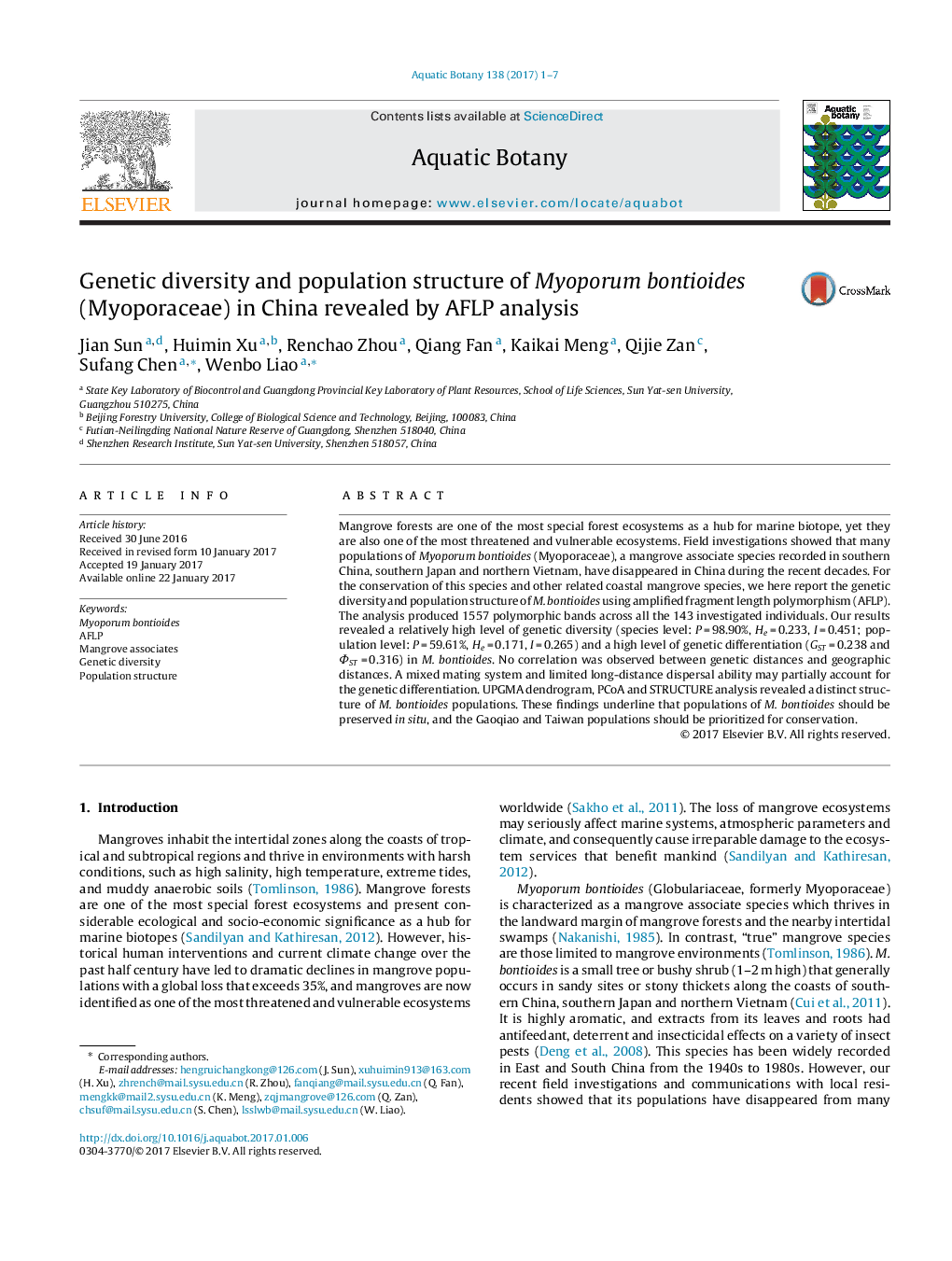| Article ID | Journal | Published Year | Pages | File Type |
|---|---|---|---|---|
| 5764051 | Aquatic Botany | 2017 | 7 Pages |
Abstract
Mangrove forests are one of the most special forest ecosystems as a hub for marine biotope, yet they are also one of the most threatened and vulnerable ecosystems. Field investigations showed that many populations of Myoporum bontioides (Myoporaceae), a mangrove associate species recorded in southern China, southern Japan and northern Vietnam, have disappeared in China during the recent decades. For the conservation of this species and other related coastal mangrove species, we here report the genetic diversity and population structure of M. bontioides using amplified fragment length polymorphism (AFLP). The analysis produced 1557 polymorphic bands across all the 143 investigated individuals. Our results revealed a relatively high level of genetic diversity (species level: P = 98.90%, He = 0.233, I = 0.451; population level: P = 59.61%, He = 0.171, I = 0.265) and a high level of genetic differentiation (GST = 0.238 and ΦST = 0.316) in M. bontioides. No correlation was observed between genetic distances and geographic distances. A mixed mating system and limited long-distance dispersal ability may partially account for the genetic differentiation. UPGMA dendrogram, PCoA and STRUCTURE analysis revealed a distinct structure of M. bontioides populations. These findings underline that populations of M. bontioides should be preserved in situ, and the Gaoqiao and Taiwan populations should be prioritized for conservation.
Related Topics
Life Sciences
Agricultural and Biological Sciences
Aquatic Science
Authors
Jian Sun, Huimin Xu, Renchao Zhou, Qiang Fan, Kaikai Meng, Qijie Zan, Sufang Chen, Wenbo Liao,
